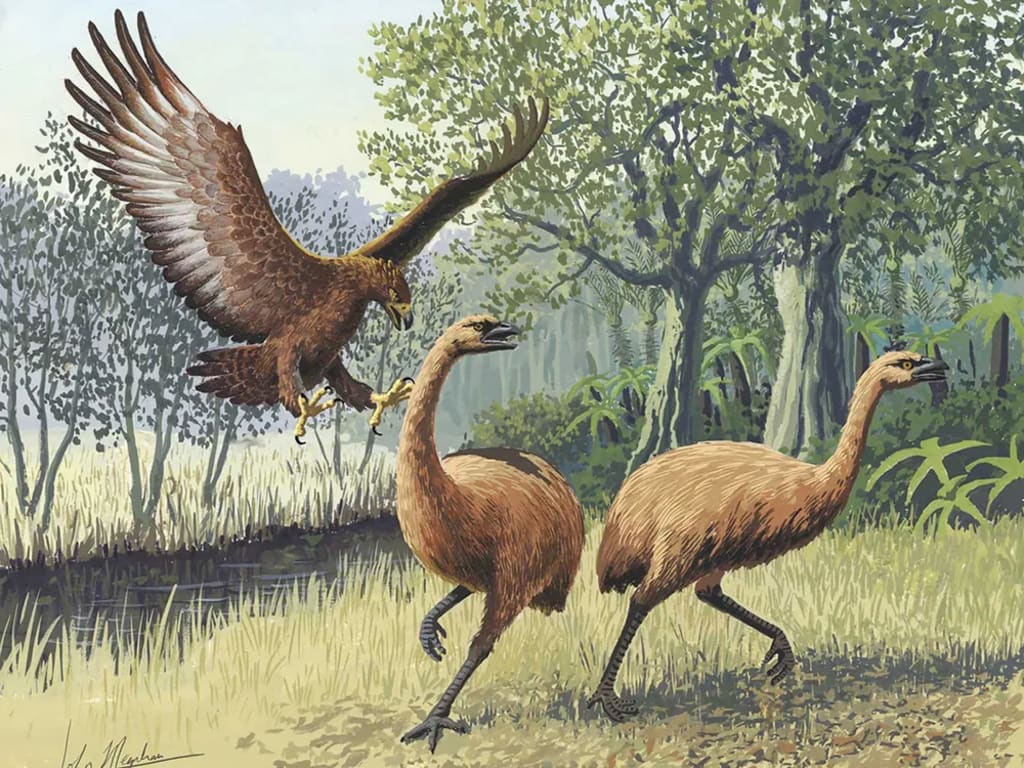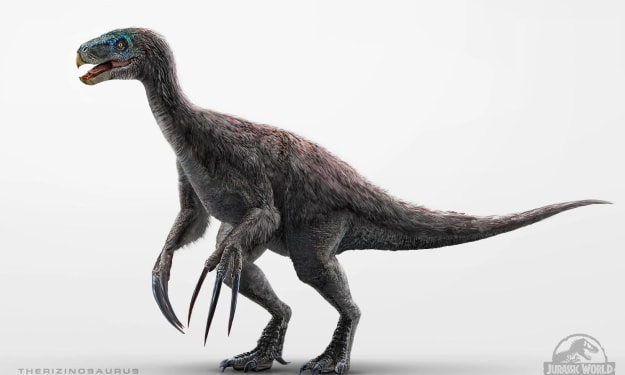Destructive Creatures You'll Absolutely love To Know Are Wiped out; Chapter1
The world's brimming with a few startling animals who'd experience no difficulty making a fast dinner out of us people. However, as frightening a few creatures today might appear, there once existed considerably greater, badder, and way additional unnerving monsters. From youngster eating falcons to goliath savage whales, the following are 20 dangerous creatures that you'll love to know are wiped out

Number 20, Arctotherium Angustidens.
Coincidentally finding a wild bear is sufficient to make the vast majority escape in dread. Yet, even completely mature grizzlies look as innocuous as offspring when contrasted with the Arctotherium Angustidens. All the more regularly known as The Goliath Short-Confronted Bear, it hailed from South America and lived around 2.5 quite a while back. With a typical weight near two tons, Arctotherium Angustidens takes the title for Greatest Bear to Have At any point Lived. For some unique circumstance, polar bears, the biggest land carnivore alive today, are not exactly a portion of the heaviness of these old bears. What's more, these folks could arrive at a scary 14 feet when stood upstanding - that is higher than a one-story building. OK, so they're truly tall and truly weighty, yet that should dial them back, correct? Indeed, taking into account that the direct relation of this bear, the Arctodus Simus - a more modest sort inside the goliath short-confronted bear family could arrive at a frightening maximum velocity of 40 miles each hour and all things considered, these folks would've timed up a fast speed as well. Along these lines, except if you have haggles motor, there could not have possibly been a lot of possibility of getting away. Also, getting away certainly you'd need to do. Broken fossilized teeth uncovered that this bear bit on bones, proposing that tissue was a piece of their eating regimen. Thus, to them, human likely equivalent a substantial hors d'oeuvre. Regardless of their actual ability, these bears were progressively supplanted by the medium-sized Arctotherium Vetustum something like a long time back. Nobody knows how or why such a savage power vanished, yet it's conceivable that the expanded contest from carnivores like the puma, cougar, and desperate wolf drained the enormous bear's meal. Either that, or there's a considerably greater substantiate there that we simply haven't found at this point.
Number 19, Haast's Bird
Haast's Bird Luckily, those massive bears went wiped out something like 400,000 years before us Homo Sapiens first showed up. Nonetheless, a few long-terminated creatures once took on man. Or on the other hand actually, toe-to-hook, in the event that the enormous skeletal remaining parts of the rapacious Haast's Falcon are anything to go by. Presently, these specific remaining parts were tracked down in the South Island of New Zealand. With a wingspan of up to 10 feet, the remaining parts are enormous to the point that the bird is presently viewed as the greatest falcon of all time. The skeleton demonstrated it would have waited around a portion of the level of a typical man, and tipped the scales at nearly 40 pounds. Multiple times that of a bald eagle. The primary prey of these gigantic hawks were Moa, a flightless bird that was multiple times heavier than their tracker. Moa bone remaining parts show that Haast's Hawks killed their prey by flying at them from behind and handling them with their blade like three inch claws, prior to grasping and pulverizing the Moa's skull. Any other person getting a headache? Stunningly, it's conceivable that Moa weren't the main feast on the Haast's Hawk's menu. Legends from the native Māori individuals of New Zealand detail enormous birds, diving down and culling up a little youngster, who was gone forever. However, in the sixteenth 100 years, only 200 years after the Māori populace chose the South Island, they sought their retribution. Human overhunting of the Moa probably prompted the bird's possible eradication. Furthermore, with that, Māori kids could at long last breathe a sigh of relief.
Number 18, Josephoartigasia Monesi
New York is popular for its enormous rodents, with a few arriving at the size of little canines and house felines. In any case, as large as a New York rodent might be, their old cousins were something different. Presenting, the Josephoartigasia Monesi, who lived way back between 4 to a long time back. Viewed as the biggest rat to at any point walk the substance of the earth. These South American repulsions measure in up to 10 feet in length and gauged up to an astounding 2,200 pounds. For some point of view, that is around similar load as 12 grown-up people. However, size isn't the main thing to keep an eye out for with these super rodents. They likewise uncovered sickening incisors, arriving at just about a whole foot long. PC displaying procedures in light of the Josephoartigasia Monesi's skull uncovered that the rodents had a chomp power of 3,600 pounds for each square inch, or PSI, giving them a comparative nibble power of a saltwater crocodile. Fortunately, these monster rodents weren't rapacious executioners. Researchers accepted that Josephoartigasia Monesi involved their incisors for gnawing nuts and wood, diving in the ground for food, or safeguarding themselves from hunters. Also, with those goliath detestations in their mouth, whatever played with these folks would be cut up in short order. Unexpectedly, New York City's rodent issue doesn't appear to be so terrible at this point.
Number 17, Megalania.
Around 2.5 a long time back, the dusty fields of Australia were home to a few genuine dread, yet none could contend with the goliath screen reptile, known as Megalania. Seeming to be a hulked-out rendition of a Komodo mythical serpent, these ancient hunters could arrive at an incredible 23 feet in length, making them over two times the size of their Komodo relatives. What's more, as Komodo mythical beasts, Megalania are accepted to have held onto venomous organs inside their jaw, that created hemotoxin. At the point when it went after, Megalania's sharp, bended teeth would puncture their prey's skin, before the hemotoxin entered the casualty's circulatory system. Right now, the toxin would go about as an anticoagulant, keeping the prey's blood from thickening. This, thus, would quickly diminish the prey's pulse causing foundational shock, and in the long run passing. All in all, what caused the destruction of this super-monstrous deadly reptile? Scientists from the College of Queensland as of late dated a Megalania issue that remains to be worked out around 50,000 years of age, which is around the very time that people originally showed up in Australia. It's presently accepted that people might have taken part in the Megalania's termination. Whether man killed the goliath reptiles to safeguard themselves, or overhunted their prey isn't known. What I do be aware, however, is that in some way Australia - the land where essentially everything can kill you, might have been significantly seriously unnerving.
Number 16, Thylacoleo Carnifex. Presently, Australia's ancient detestations don't end with the Megalania. The Thylacoleo Carnifex, is a wiped out marsupial lion that overwhelmed the Australian wild between quite a while back. Fossil proof shows this wombat-lion cross breed estimated in at around five feet in length, around over two feet tall, and weighed around 220 pounds. This intends that at their biggest, they were about a similar load as a cutting edge panther, yet all the same somewhat stockier. In any case, not at all like pumas, Thylacoleo Carnifex weren't furnished with sharp canine teeth. All things considered, these enormous marsupials had two sets of monster incisors that they used to wound and penetrate the tissue of their prey. What's more, it was an incredible wound. Their chomp force was equivalent to that of a 500-pound African lion. This is thanks to their huge jaw muscles, which transformed each tooth in their mouth into a weapon. While their incisors were utilized for penetrating the tissue of their prey, their molars were intended to pound their casualty's windpipe and cut off their spinal rope. In the event that that wasn't adequately awful, these threatening marsupials had tremendous retractable thumb paws, utilized for eviscerating their kill. This metal hunting technique would've assisted these marsupial lions with killing enormous prey in under a moment - multiple times speedier than an African lion. However, similarly as with the Megalania, their savage elements couldn't keep them from falling into annihilation, because of environment changes, which continuously dried out their territory and decreased the food supply. Amazing, never figured I would be grateful for environmental change. Number 15, Gigantopithecus Blacki.Did you realize bigfoot is genuine? Well...sort of. Ancient primates, known as Gigantopithecus Blacki, that intently look like bigfoot, meandered the forestland of Southern China approximately quite a while back. Precise size gauges are exceptionally theoretical, on the grounds that main tooth and jawbones have been found, yet even these are sufficient to appraise that they waited around 10 feet tall and gauged as much as 1,200 pounds, making them comparably two times as tall and almost multiple times as weighty as silverback gorillas. Being situated in Southern China, all things considered, bamboo was a staple of its eating regimen. In any case, I wouldn't play with these things, taking into account that even a silverback gorilla is sufficiently able to pound a human into mincemeat. The inquiry is, what influenced a major, expansive monster to go terminated?





Comments
There are no comments for this story
Be the first to respond and start the conversation.